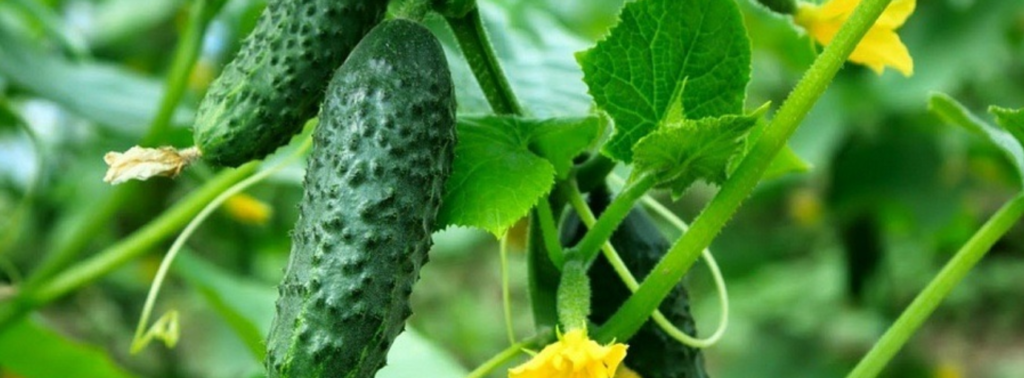
 Огурцы
ОгурцыCucumber is perhaps the most common vegetable crop in our areas. Meanwhile, a cucumber, like a watermelon and pumpkin, is not a vegetable at all, but a berry.
It began to be grown in tropical regions of Asia with a humid, warm climate (India, Burma, Indonesia, etc.) long before our era. From eastern countries, the cucumber slowly began to spread to the Mediterranean countries (Greece, Italy, Egypt).
highly fertile, well-drained, low in nitrogen, neutral or slightly alkaline.
regular, drip. Consumption – 1 liter of water per plant.
6-8 times per season with organic and mineral fertilizers. Do not fertilize during periods of sudden cold weather.
8-12 days after planting in the ground, after watering, then 2.5-3 weeks after the first hilling.
at the development stage there are 3-4 leaves, then at the development stage there are 8 leaves, then at the formation stage there are 12 leaves.
horizontal and vertical. They begin tying the lashes to the supports almost immediately after planting the cucumbers in the ground.
seeds.
Of the early ripening varieties, the best are considered to be Kustovoy, Altaisky early, Vyaznikovsky 37, Rodnichok, hybrids Masha, Lastochka, New Nezhinsky, Konny, Champion, Courage and German.
From mid-season – Adam, Director, Kibria, Chinese heat-resistant, Claudia, Mother-in-law, Barrel salting, Far Eastern 27, Phoenix plus, hybrids Amur, Libelle, Moravian gherkin, Russian style.
Among the late varieties good are Phoenix 640, Kapelka, Aquarius, Pobeditel, Donskoy 175, Brigadny, Vladivostoksky, Nezhinsky local, Chinese miracle, hybrid Relay.

Zucchini is a bush variety of hard-bark pumpkin and belongs to the Cucurbitaceae family. Zucchini comes from the Oaxaca Valley in Mexico, from where in the 16th century, along with other products outlandish for the Old World, it came to Europe, where it was first grown in greenhouses as a rare plant, and only in the 18th century did its unripe fruits first appear on the table.
seasoned with organic fertilizers, light loam or chernozem with a neutral or slightly alkaline reaction.
regular and abundant, in the evening: until the leaves close – daily, after – once every 5-6 days in cool and cloudy weather and once every 2-3 days in hot weather.
solutions of organic fertilizers: two weeks after transplanting the seedlings into the ground, then another week, and the third – during the formation of the ovaries. Before applying solutions, the area is watered.
slugs, melon aphids and whiteflies.
powdery mildew, black mold, bacteriosis, white rot, anthracnose and root rot.
Pre-sowing treatment of seeds is carried out in the same way as when sowing in open ground – the main thing is that they swell before sowing and small sprouts appear. Planting zucchini seedlings is carried out 3-4 weeks before planting them in open ground – depending on climatic conditions, this could be the beginning of April, or maybe the beginning of May.
When caring for zucchini seedlings, you additionally need to make at least two additional fertilizings with mineral and organic fertilizers. The use of fertilizer with chlorine is contraindicated.